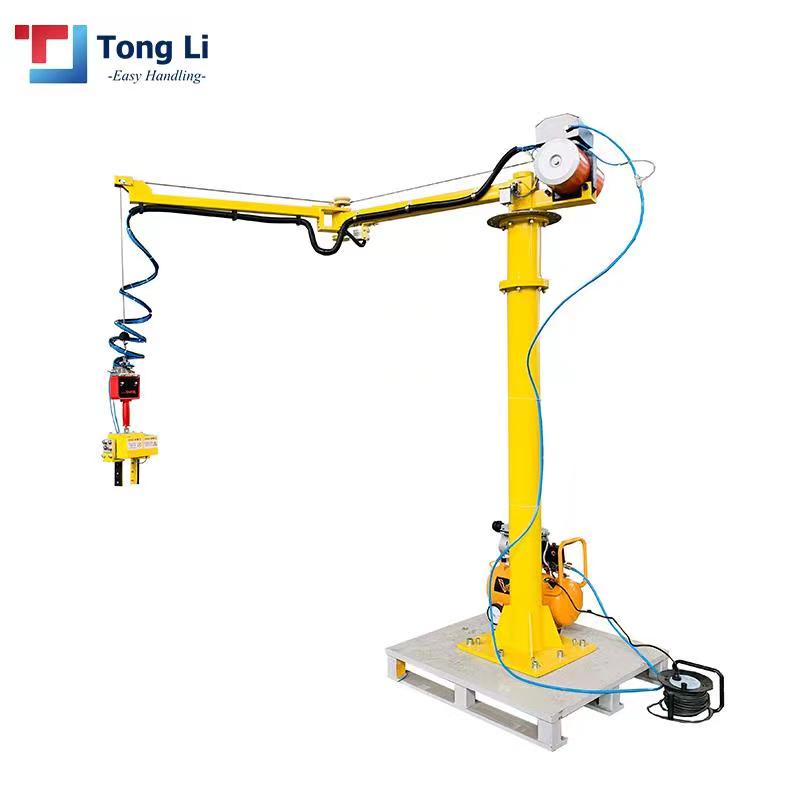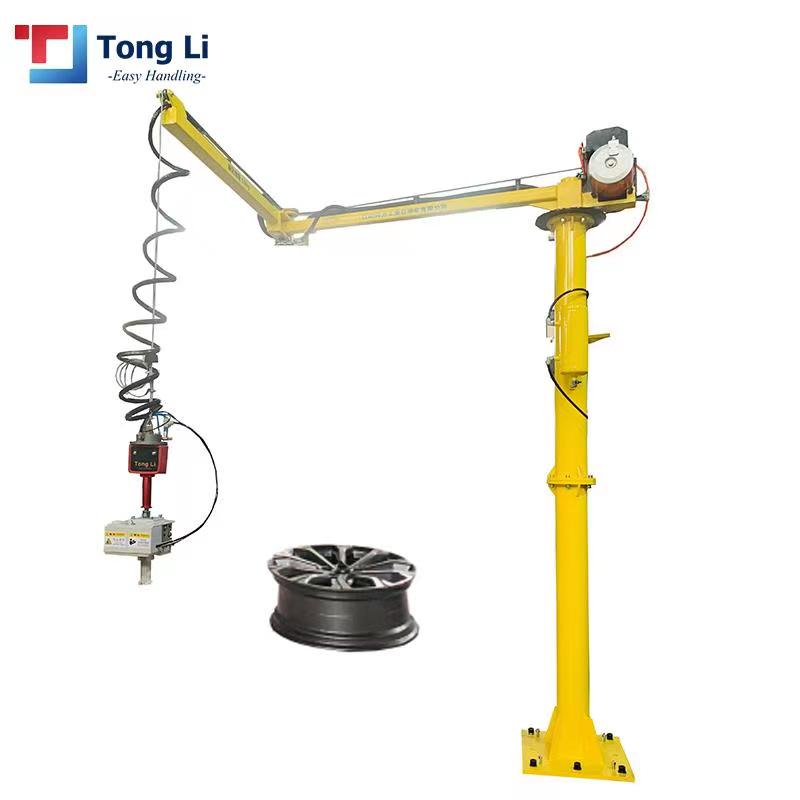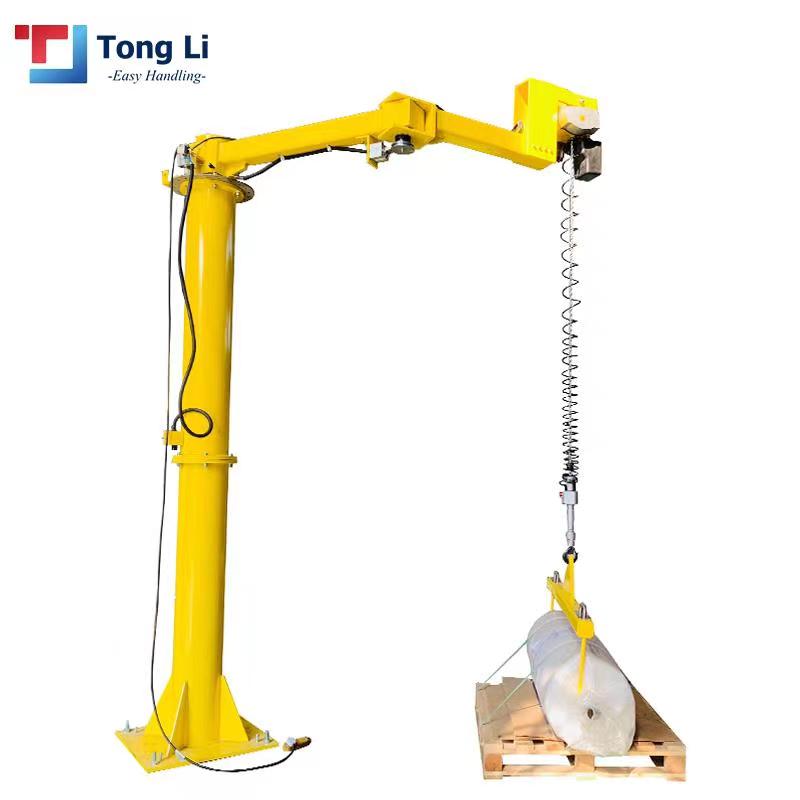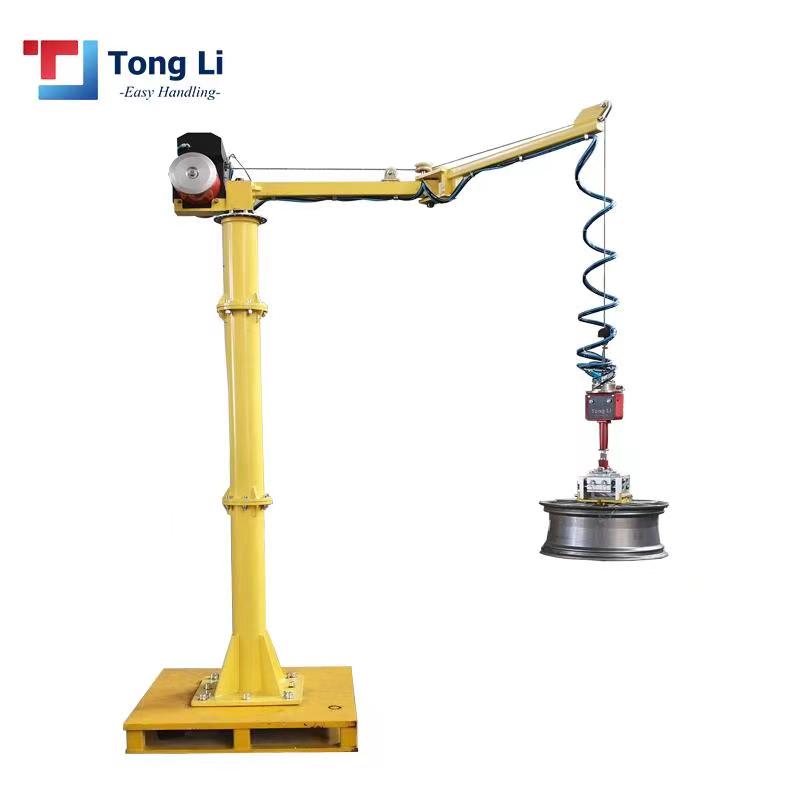A pneumatic counterbalance crane is a pneumatic handling device that uses the gravity of a heavy object and the pressure in the cylinder to achieve balance to lift or lower the heavy object. Generally a pneumatic balancing crane will have two balancing points, which are heavy load balancing and no load balancing. Heavy load balance is the balance state when there is a heavy load on the balance crane, and no load balance is the balance state when there is no load on the balance crane. Regardless of the balancing state, the gripper will be at rest, when only a very small external force is needed to lift or lower the weight or gripper. Using this principle of pneumatic balancing crane, it can improve the efficiency and reduce the labor intensity of workers. Moreover, the pneumatic balancing crane has a simple structure, few components, low cost and can be used in harsh working conditions.
The core component of the pneumatic balancing crane is a large flow, large emissions, high precision pneumatic pressure reducing valve, this pressure reducing valve is directly related to the accuracy of the positioning of the weight, the size of the external force required to move the weight, the speed of moving the weight.
The two pilot pressure reducing valves inlet pressure is taken from the main line, which are used as the pilot valves for heavy load balance and no load balance respectively. The two pilot gases are passed into the two-way three-way reversing valve, which is used to switch between heavy load balance and no load balance. After the reversing valve, the pilot gas passes into the gas-controlled pressure reducing valve, and the outlet pressure of the gas-controlled pressure reducing valve is equal to the corresponding pilot pressure. The gas from the main line is depressurized by the gas-controlled pressure reducing valve and then passed to the cylinder, which is filled with gas and the piston rises, thus pulling up the weight.
When the weight is lifted and at rest, it means that the balance of heavy load is reached, then only a small external force is needed to break this balance, and it can be easily lifted or lowered. Take pulling down the weight to break the balance as an example, when using external force to pull down, the piston in the cylinder moves downward, then the pressure in the cylinder rises and exceeds the set pressure (this set pressure is the pressure at the balance), the excess pressure will be discharged from the discharge port of the gas-controlled pressure reducing valve. The result of such a process is: the piston (weight) drops to a certain position and is stationary, and the pressure in the cylinder returns to the previous equilibrium pressure. Conversely, lifting the weight upward to break the pressure balance in the cylinder is the same thing, except that the gas flows in the reverse direction (from the cylinder to the exhaust port of the air-controlled pressure reducing valve) and the other is in the positive direction (the air-controlled pressure reducing valve flows into the cylinder).
Post time: Sep-27-2021





